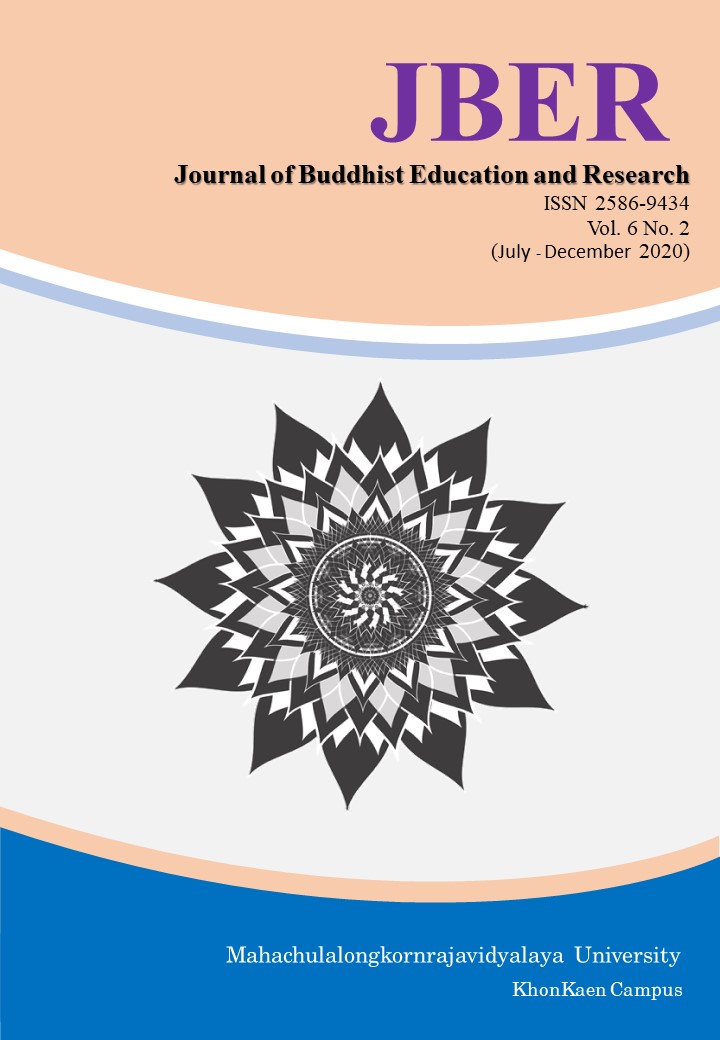Assessment of Willingness to Pay to Prevent Air Pollution from Particulate Matters 2.5 (PM2.5) in Bangkok
Keywords:
Willingness to pay; Air pollution; PM2.5; Contingent Valuation MethodAbstract
The objective of this study was to investigate the determinants of the willingness to pay for preventing particulate matter less than 2.5 micron (PM2.5) problems in Bangkok using the Contingent Valuation Method (CVM). For the methodology, closed-ended questions were raised with two quotations and the willingness to pay (WTP) was assessed through the Double Bounded Logit Model. A questionnaire was used as a research tool to collect data from the sample of 564 households in Bangkok. The research results showed that the households’ willingness to pay for personal protective equipment was 6,124.89 baht/household/year, or 16,857 million baht/year and the willing to pay more for 1 μg reduction in PM2.5 was 18,946.87 million baht/year, or 6,402 baht/household/year. The determinants of the willingness to pay were the number of days of exercise of being more than 5 days/week, the number of household members, income and the impact of air pollution.All 4 factors were positively correlated to the willingness to pay with a statistical significance level. 2 factors, including number of children in the household and number of elderly in the household, were negatively correlated to the willingness to pay with a statistical significance level.
References
กรมควบคุมมลพิษ. (2563). รายงานสถานการณ์และคุณภาพอากาศประเทศไทย. สืบค้นเมื่อ 15 มิถุนายน 2562. จาก http://air4thai.pcd.go.th/webV2/.
ณัฐกิตติ์ กิตติณัฏฐพงศ์. (2555). วิเคราะห์ความเต็มใจจะจ่ายเพื่อฟ้นฟูสภาพอากาศในเขตควบคุมมลพิษของจังหวัดระยอง. วารสารเศรษฐศาสตร์สุโขทัยธรรมาธิราช. 6(2), 1-18
ประกาย ธีระวัฒนากุล. (2550). การศึกษาความเต็มใจจ่ายเพื่อการปรับปรุงคุณภาพอากาศในเขตกรุงเทพ- มหานคร โดยเทคนิคการสมมติเหตุการณ์ให้ประเมินค่า: กรณีศึกษาเขตจตุจักร. วิทยานิพนธ์เศรษฐศาสตรมหาบัณฑิต. มหาวิทยาลัยธรรมศาสตร์.
วรานันต์ ตันติเวทย์. (2555). ปัจจัยที่มีผลต่อโอกาสในการประสบปัญหาสุขภาพอันเกิดจากมลพิษทางอากาศในนิคมอุตสาหกรรมมาบตาพุด จังหวัดระยอง. วารสารเศรษฐศาสตร์และบริหารธุรกิจ. 55(1), 355-363
วิษณุ อรรถวานิช และคณะ. (2563). สมุดปกฟ้าอากาศสะอาด ประเทศไทย (Clean Air Blue Paper, Thailand). เครือข่ายอากาศสะอาด ประเทศไทย. ISBN 978-616-393-295-2.: สำนักพิมพ์สำนักงานกองทุนสนับสนุนการสร้างเสริมสุขภาพ
________. (2561). ต้นทุนของสังคมไทยจากมลพิษทางอากาศและมาตรการรับมือ. สถาบันวิจัยเศรษฐกิจป๋วย อึ๊งภากรณ์ . สืบค้นเมื่อ 2 มิถุนายน 2562. จาก https://www.pier.or.th/? post_ type= abridged&p=6547.
สุนิดา พิริยะภาดา. (2561). มูลค่าความเต็มใจที่จะจ่ายของนักท่องเที่ยว เพื่อการจัดการแหล่งท่องเที่ยวคาร์บอนต่ำ: กรณีศึกษาเกาะล้าน จังหวัดชลบุรี. วารสารพัฒนาการเศรษฐกิจปริทรรศน์. 12(2), 82-97
อนันธชัย นะวะสด. (2553). การศึกษาความเต็มใจจ่ายเพื่อการป้องกันปัญหามลพิษทางอากาศสำหรับชุมชนโดยรอบท่าเรือและนิคมอุตสาหกรรมแหลมฉบัง จังหวัดชลบุรี. วารสารเศรษฐศาสตร์และนโยบายสาธารณะ. 8(15), 32-55
Weixian Wei. (2016). Willingness to pay to control PM 2.5 pollution in Jing-Jin-Ji Region, China. Article in Applied Economics Letters. 24(11): 1-9 · September 2016.
X. J. WANG. (2015). Air Quality Improvement Estimation and Assessment using Contingent Valuation Method, a casestudy in Beijing. Environmental Monitoring and Assessment. (2006) 120: 153–168.
Siqi Zheng. (2014). Self Protection Investment Exacerbates Air Pollution Exposure Inequality in Urban China. NBER Working Paper. No. 213. 01 June 2015.





